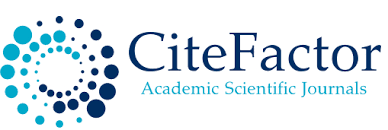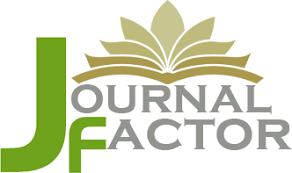Prevalence of exclusive breastfeeding and associated factors among mothers in Surman City a cross-sectional study
DOI:
https://doi.org/10.54361/ljmr.15203Keywords:
Exclusive breastfeeding, Predictor, Surman cityAbstract
Background: Exclusive breastfeeding (EBF) means that the infant receives only breast milk for the first six months of life after birth. The objective was to assess the prevalence of EBF and associated factors among mothers having children aged 0–6 months in Surman city, Libya. Methods: A cross-sectional study was conducted in Surman city among 146 mothers of infants aged 0–6 months. Eligible mothers were identified and randomly selected using the demographic surveillance system’s computerized database that is updated weekly. A semi-structured questionnaire was used for interviews that inquired information on socio-demographic characteristics, obstetric, health service, breastfeeding related factors (initiation of breastfeeding, prelacteal feeding and colostrum feeding) and economic factors. EBF prevalence was calculated using 24-hour recall method. Multivariate logistic regression analysis was used to identify those factors associated with the Exclusive breastfeeding. Results: The prevalence of EBF in the last 24 hours preceding the survey was 44.5%. Significant evidence of an association was observed with type of delivery, assistance during delivery and fathers' education with (OR = 0.664, 95% CI 0.461, 0.957, p=0.027), (OR =0.593, 95% CI 0.422, 0.835, p=0.007) and (OR= 2.500, 95% CI 1.161,2.925 P= 0.041) respectively. Age, Mothers’ education, Initiation of breastfeeding, were found to be not associated with breastfeeding practices. Conclusion: The prevalence of EBF Surman city (44,5%) is lower than Global Nutrition Targets 2025, increase the rate of EBF in the first 6 months up to at least 50%. Most (66.4%) of the mothers reported that they had not received breastfeeding education during their last pregnancy and 94.5% percent of mothers had not antenatal care visits, (54.8%) were Caesarean deliveries These findings suggest that there is a need for breastfeeding support provided by health services. Hence, promotion of EBF during the first six months of life needs to be addressed and future breastfeeding promotion programs should give special attention to those women who are not practicing EBF
Downloads
References
Breastfeeding Practice, Support, and Self- Efficacy Among working Mothers in a Rural Health Clinic in Selangor) Aneesa Abdul Rashid*1 , Nurainul Hana Shamsuddin1 and alt, Mal J Med Health Sci 14(2): 39-49, June 2018
World Health Organization: Indicators for assessing infant and young child feeding practices. Part I: Definitions. Geneva: World Health Organization, 2008
Horta BL, Victora CG. Long-term effects of breastfeeding: a systematic review. Geneva: World Health Organization; 2013 (http://apps.who.int/ iris/bitstream/10665/79198/1/97892415053 07_eng.pdf, accessed 7 October 2014).
Jones G, Steketee RW, Black RE, Bhutta ZA, Morris SS; Bellagio Child Survival Study Group. How many child deaths can we prevent this year? Lancet. 2003;362:65–71
World Health Organization. Global targets 2025. To improve maternal, infant and young child nutrition (www.who.int/nutrition/topics/ nutrition_globaltargets2025/en/, accessed 6 October 2014)
Merten S, Ackermann-Liebrich U: Exclusive breastfeeding rates and associated factors in Swiss baby-friendly hospitals. J Hum Lact 2004, 20:9–17
Tan KL: Factors associated with exclusive breastfeeding among infants under six months of age in peninsular Malaysia. Int Breastfeed J 2011, 6:2 .
Baccush MM, Nayak CS. Breast feeding practice in an urban population of Tripoli, Libya. Garyounis Med J. 1992; 15: 3542.
Maghoub P, Stephens AJH. The pattern of infant feeding in an urban community in the Libyan Jamahiriya. Garyounis Med J. 1979; 2: 17-9
Rafik R. Elmehdawi & Abdulwahab M. Albarsha (2012) Obesity in Libya: a review, Libyan Journal of Medicine, 7:1, 19086, DOI: 10.3402/ljm.v7i0.19086
World Health Organization and UNICEF 2009, Baby-friendly hospital initiative : revised, updated and expanded for integrated care. Section 1, Background and implementation.
Vafaee A, Khabazkhoob M, Moradi A, Najafpoor AA: Prevalence of exclusive breastfeeding during the first six months of life and its determinant factors on the referring children to the health centers in Mashhad, Northeast of Iran. J Appl Sci 2010, 10:343–348.
Balogun OO, Dagvadorj A, Anigo KM, Ota E, Sasaki S. Factors influencing breastfeeding exclusivity during the first 6 months of life in developing countries: a quantitative and qualitative systematic review. Matern Child Nutr. 2015; 11:433-51.
Mohamed Thabet Ali, Faiza M. Ali, Prevalence and Maternal Concerns of Exclusive Breast feeding in Libyan women in Albaida City Al-Mukhtar Journal of Sciences34 (2): 105-111,2019)
WHO EMRO/ maternal characteristic and infant and young child feeding in Benghazi|volume2, issue3|EMHJvolume2,1992Libyan J Med Res. 2022;16(1):61-72 72
Xiaodong Cai1*, Tessa Wardlaw2 and David W Brown2 Global trends in exclusive breastfeeding. Cai et al. International Breastfeeding Journal 2012, 7:12
Black RE, Victora CG, Walker SP, Bhutta ZA, Christian P, de Onis M et al. Maternal and child undernutrition and overweight in low-income and middle-income countries. Lancet. 2013;382:427– 51.
World Health Organization. World Health Statistics 2013 (www.who.int/gho/ publications/world_health_statistics/201 3/en/, accessed 7 October 2014).
World Health Organization. WHO statement on caesarean section rates. 2015. Report No.: WHO/RHR/15.02.
Ten steps to successful breastfeeding. [http://www.tensteps.org/]
Amit Arora, Narendar Manohar1, et al, Determinants of breastfeeding initiation among mothers in Sydney, Australia: findings from a birth cohort study, Arora et al. International Breastfeeding Journal (2017) 12:39
Rana F. Chehab1 , Lara Nasreddine2*, Racha Zgheib3 and Michele R. Forman1, Exclusive breastfeeding during the 40-day rest period and at six months in Lebanon: a cross-sectional study, Chehab et al. International Breastfeeding Journal (2020) 15:45
Agho KE, Dibley MJ, Odiase JI, et al. Determinants of exclusive breastfeeding in Nigeria. BMC Pregnancy Childbirth. 2011;11:2.
Al Ghwass MME, Ahmed D. Prevalence and predictors of 6-month exclusive breastfeeding in a rural area in Egypt. Breastfeed Med. 2011;6(4):191–6
Asemahagn MA. Determinants of exclusive breastfeeding practices among mothers in Azezo district, Northwest Ethiopia. Int Breastfeed J. 2016;11:22.
Al-Sahab B, Lanes A, Feldman M, et al. Prevalence and predictors of 6- month exclusive breastfeeding among Canadian women: a national survey. BMC Pediatr. 2010;10:20
Ogbo FA, Agho KE, Page A. Determinants of suboptimal breastfeeding practices in Nigeria: evidence from the 2008 demographic and health survey. BMC Public Health. 2015;15:259.
Alemayehu T, Haidar J, Habte D. Determinants of exclusive breastfeeding practices in Ethiopia. Ethiop J Health Dev Ethiop J Health Dev. 2009;23(1):12–8.
Sonko A, Tadesse AW. Prevalence and predictors of exclusive breastfeeding for the first six months of life among women in Halaba special woreda, southern nations, nationalities and peoples’ region/SNNPR/, Ethiopia: a community based cross-sectional study. Arch Public Health. 2015;73:53.
Asfaw MM, Argaw MD, Kefene ZK. Factors associated with exclusive breastfeeding practices in Debre Berhan District, Central Ethiopia: a cross
Downloads
Published
Issue
Section
License
Copyright (c) 2022 Ali M Dwaib, Abdalrauf A Yousif (Author)

This work is licensed under a Creative Commons Attribution-NonCommercial-NoDerivatives 4.0 International License.
Open Access Policy
Libyan journal of medical Research (LJMR).is an open journal, therefore there are no fees required for downloading any publication from the journal website by authors, readers, and institution.
The journal applies the license of CC BY (a Creative Commons Attribution 4.0 International license). This license allows authors to keep ownership f the copyright of their papers. But this license permits any user to download , print out, extract, reuse, archive, and distribute the article, so long as appropriate credit is given to the authors and the source of the work.
The license ensures that the article will be available as widely as possible and that the article can be included in any scientific archive.
Editorial Policy
The publication of an article in a peer reviewed journal is an essential model for Libyan journal of medical Research (LJMR). It is necessary to agree upon standards of expected ethical behavior for all parties involved in the act of publishing: the author, the journal editorial, the peer reviewer and the publisher.
Any manuscript or substantial parts of it, submitted to the journal must not be under consideration by any other journal. In general, the manuscript should not have already been published in any journal or other citable form, although it may have been deposited on a preprint server. Authors are required to ensure that no material submitted as part of a manuscript infringes existing copyrights, or the rights of a third party.
Authorship Policy
The manuscript authorship should be limited to those who have made a significant contribution and intellectual input to the research submitted to the journal, including design, performance, interpretation of the reported study, and writing the manuscript. All those who have made significant contributions should be listed as co-authors.
Others who have participated in certain substantive aspects of the manuscript but without intellectual input should only be recognized in the acknowledgements section of the manuscript. Also, one of the authors should be selected as the corresponding author to communicate with the journal and approve the final version of the manuscript for publication in the LJMR.
Peer-review Policy
- All the manuscripts submitted to LJMR will be subjected to the double-blinded peer-review process;
- The manuscript will be reviewed by two suitable experts in the respective subject area.
- Reports of all the reviewers will be considered while deciding on acceptance/revision or rejection of a manuscript.
- Editor-In-Chief will make the final decision, based on the reviewer’s comments.
- Editor-In-Chief can ask one or more advisory board members for their suggestions upon a manuscript, before making the final decision.
- Associate editor and review editors provide administrative support to maintain the integrity of the peer-review process.
- In case, authors challenge the editor’s negative decision with suitable arguments, the manuscript can be sent to one more reviewer and the final decision will be made based upon his recommendations.










